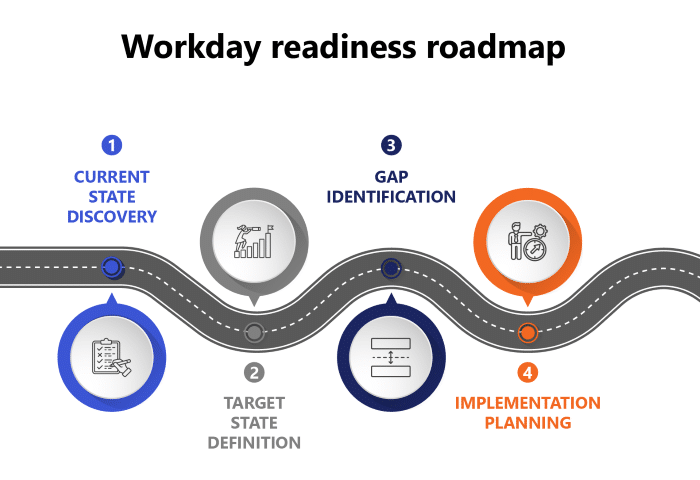Executive summary: Workday, when treated as a platform strategy, gives leaders the clarity to rein in OpEx, expose true talent costs, and build the foundation for agentic AI.
9-minute read
Last week at Workday Rising 2025, I sat on a panel about Workday’s role in enterprise transformation. The themes weren’t surprising: OpEx pressure is unrelenting, talent costs keep climbing, and boards want to see results from AI—yesterday. These aren’t “future trends.” They’re the reality every executive is facing right now.
During our session, I called out a simple truth: Too many leaders are still running the business on stitched-together spreadsheets. Workday, when approached as a platform strategy, replaces that patchwork with an operating backbone for people, projects, and financials.
In this article, we’ll look at how leaders can control OpEx pressure now by treating Workday as a platform strategy, not a one-time implementation, and position the enterprise to adapt as AI-driven change accelerates.
OpEx pressure is everyone’s problem. IT can take the lead.
OpEx pressure isn’t just a finance issue. It’s a business-wide reality. And because IT owns the enterprise’s systems and data flows, it’s the function best positioned to act first. Until IT consolidates fragmented platforms and delivers timely actuals, finance and operations are stuck reacting after the fact.
Disparate systems are expensive to own and expensive to keep running. Licensing fees add up quickly, integration workarounds consume IT bandwidth, and maintenance requires people-hours that could be spent on higher-value initiatives. Despite all that effort, data stitched together across systems is often incomplete or outdated, leaving leaders to steer the business without a clear picture.
Workday changes that equation. With HR and ERP data on the same backbone, costs flow to the right programs and cost centers automatically. IT no longer spends its time stitching systems together, but instead delivers real-time data and information that business leaders can act on promptly. The payoff is measurable: faster decisions, fewer surprises, and a clearer picture of where operations are consuming cash.
Article continues below.
PLAYBOOK
We will never sell your data. View our privacy policy here.
Workday as a platform strategy, not just an implementation
Too many organizations still treat Workday as a one-time implementation milestone. The once-and-done mindset leaves value on the table. The opportunity comes when Workday is approached as a platform strategy, a foundation that brings finance, HR, and operations together.
Implementations stop at go-live. A platform strategy keeps creating value by reducing cost, improving accuracy, and creating the foundation the enterprise needs to put AI to work.
So, what does a platform strategy look like in action? It comes down to three system-level shifts that change how the business runs:
Unify core systems
A fragmented system landscape creates fragile connections, reconciliation errors, and high operating costs. Workday’s unified data model allows core functions—financials, human capital, time tracking, expense management, and project accounting—to run on one backbone.
Not every department will operate entirely on Workday, but it should serve as the anchor for the most critical functions where accuracy, consistency, and cost control matter most. Workday also provides the integration points needed to connect cleanly with external systems, avoiding the inefficiencies and risks that come from custom connectors or ad hoc data handoffs.
See analytics in time to act
Quarterly rollups come too late for leaders to impact operating costs. Workday automates allocations and tagging across people, financials, and projects to deliver reliable monthly actuals. It also highlights the biggest cost drivers—OpEx, cost of goods sold (COGS), and underutilized capacity—so executives can pivot before the quarter closes. In today’s uncertain growth environment, reacting quickly is what separates organizations that stay in control from those that lose track of costs.
Create consistency from the start
Inconsistent setups create downstream errors in payroll, compliance, reporting, and financial transactions. Workday reduces this risk by standardizing how core processes are configured and executed. Templates, catalogs, and eligibility rules ensure consistency across activities like creating offers and contracts, defining compensation structures, setting up payroll groups, and delivering role-based training.
The payoffs are cleaner data at launch, fewer downstream errors, and smoother handoffs between business and IT. For industries that depend on CPQ or project scoping, catalog-driven templates apply there as well. But across all enterprises, the real value is a foundation of repeatable standards that protect accuracy and reduce rework.
Putting AI to work on a Workday foundation
AI dominates the headlines, and most executives aren’t asking “what’s possible?” They’re asking “what can we actually put to work this year?” Agentic AI answers that question—not with hype, but with workflow automation that shows up in day-to-day operations.
Workday provides the ideal foundation for this shift. By unifying people, finance, and project data, it creates the trusted backbone agents need to operate with accuracy and control. This foundation is what separates agentic AI experiments from enterprise-scale adoption.
The three tiers of AI capability
To understand where agentic AI fits, it helps to segment AI capabilities into three tiers:
- Tier 1: AI productivity: Enhancing individual output by stripping out non-value work such as summarizing, drafting, or reducing cycle times
- Tier 2: AI automation: Streamlining structured processes such as routing, approvals, and reporting
- Tier 3: AI transformation: Reimagining workflows with agentic systems that orchestrate work end-to-end
Conceptually, enterprises progress from productivity to automation to transformation. In practice, Workday has emphasized automation first—approvals, routing, reporting— while productivity features such as summarization and drafting are only beginning to appear. Transformation will come later. Workday’s unified data model makes this progression achievable, giving organizations the underlying structure to advance from automation to transformation.
What to pilot now
Near-term agents—AI tools designed to automate specific, contained workflows using existing data—offer a practical way to test agentic AI while building confidence and governance. The key is grounding pilots in a trusted system of record. Workday provides the structured data foundation agents require to deliver reliable results.
Examples of agentic AI pilots organizations can launch using Workday data include:
- Workforce scheduling agent: Match scarce skills to demand windows by tapping Workday’s data on people, projects, and availability.
- Budget and variance agent: Detect cost or budget changes as they occur and automatically update financial forecasts and project plans in Workday, reducing delays and cost overruns.
- Billing and revenue assurance agent: Detect anomalies before they reach the Workday ledger, protecting cash flow and preventing revenue leakage.
Audit Workday AI features early and often
Workday continues to release new AI features, many of them enabled by default. Without a regular audit, enterprises risk overlooking capabilities that could drive efficiency—or worse, introducing features into production without proper testing or governance. Establishing a cadence of roadmap reviews and structured audits ensures organizations capture the value of embedded AI while managing risk, keeping adoption intentional and aligned with business priorities.
By unifying people, finance, and project data, Workday creates the trusted backbone agents need to operate with accuracy and control. This foundation is what separates agentic AI experiments from enterprise-scale adoption.
Different industries, same pressures
OpEx pressure, talent costs, and expectations from AI programs may look different across sectors, but the underlying challenge is the same: Leaders are being asked to do more with less. Workday as a platform strategy, combined with agentic AI, gives organizations the visibility and control to meet those pressures head-on—standardizing processes, clarifying costs, and adapting faster to change.
Every industry has its own nuance, but one theme cuts across all of them: aligning talent to demand. Whether the mission is keeping a power grid running, expanding a telecom network, or staffing a hospital, Workday’s unified data model ensures leaders know where skills are, what they cost, and how to deploy them efficiently.
Here’s how the foundation shows up in practice across sectors:
- Utilities: Long project cycles mean small inefficiencies compound into big costs. Workday helps standardize program templates and schedule scarce talent against regulated outage windows.
- Telecommunications: Expansion pressures require speed and consistency. Workday enables network rollouts to be scoped and priced with standardized templates, while staffing agents balance skills and costs across geographies.
- Technology: Tech organizations often struggle with inefficiencies in service and support delivery. Workday provides a backbone for governing packaged offerings and detecting billing or configuration anomalies early, protecting profitability and customer trust.
- Healthcare: High labor costs and strict compliance demand precision. Workday makes it easier to map credentialed staff to regulated work and automate closeout documentation for audits.
Your Workday readiness roadmap
Every organization wants to get more out of Workday. Unfortunately, many begin the journey with fragmented, legacy systems and manual processes that don’t align with Workday’s data model. Without first clarifying how the organization operates today—and how it needs to operate tomorrow—implementations stall or fail to deliver the results leaders expect. Readiness is the essential first step. Without it, Workday won’t deliver the results leaders expect.
The roadmap unfolds in four stages. Each stage builds on the last, providing a structured path from the current state to the target state through a clear, actionable plan.
Stage 1: Current state discovery
Every journey begins with a baseline. In this stage, enterprises document how the organization operates today, focusing on:
- Systems and processes that shape how work is performed
- Stakeholder journeys that reveal pain points and friction
- Integration points that determine where data moves—or gets stuck
Outcome: An inventory of applications, process maps, and data lineage that highlights inefficiencies and risks
Stage 2: Target state definition
With the baseline established, leaders turn their attention to the future. This stage focuses on defining what the organization should look like once Workday is fully in place. A well-defined target state addresses four dimensions:
- Optimized workflows that eliminate inefficiencies
- Enterprise architecture principles that align systems to Workday’s structure
- Governance patterns that ensure data accuracy and security
- Clear accountability across business and IT for ongoing operations
Outcome: Future-state process designs, guiding principles for architecture and governance, and a model of ownership that aligns teams for long-term success
Stage 3: Gap identification
Once the current and target states are defined, the next step is to identify the gaps between today’s operations and the Workday-enabled future state. Each gap is assessed across people, processes, and technology, noting:
- How much effort is required to close each gap
- The best order of execution to avoid rework
- The expected impact on operating costs, efficiency, or risk
Outcome: A clear view of integration requirements, data needs, and the true scope of change
Stage 4: Implementation planning
With the gaps identified, the focus shifts from analysis to building a plan for execution. This stage centers on building a phased roadmap that sets out:
- Milestones for tracking progress
- Resource allocation strategies for ensuring capacity
- Risk mitigation plans for addressing likely obstacles
- Success measures for gauging adoption and value realization
Outcome: A time-bound, actionable plan aligned to enterprise priorities

Workday readiness in action: Real-world case studies
Organizations that take readiness seriously unlock business value from Workday faster. Two recent client examples show how the roadmap delivers in practice.
Turning an expiring workaround into a Workday-ready foundation
A public-sector agency needed to modernize its financial systems as a temporary crosswalk solution was set to expire. Without centralized process documentation, the organization lacked the foundation needed for long-term integration.
The Workday readiness roadmap gave the agency a structure to move quickly while building for the future. The team conducted a current-state assessment, facilitated workshops to define future needs, and analyzed gaps against Workday capabilities.
Result: The team delivered validated business process documentation and defined integration requirements, creating a durable foundation for long-term Workday integration and eliminating reliance on temporary fixes.
Designing a roadmap to guide a statewide rollout
A state IT organization struggled with inefficiencies and limited visibility ahead of a major Workday deployment. Leadership knew that without a structured plan, the rollout risked delays and misalignment between business and IT.
Applying the readiness roadmap, the team assessed the current state, designed target-state workflows, developed an operating model, and built a roadmap.
Result: The team secured sign-off from business and IT leaders on future-state processes and built a phased integration roadmap, enabling smooth Workday deployment and preventing rollout delays.
The Workday readiness roadmap gave the agency a structure to move quickly while building for the future. The team conducted a current-state assessment, facilitated workshops to define future needs, and analyzed gaps against Workday capabilities.
Turning pressure into momentum
OpEx pressure, talent costs, and expectations from AI programs aren’t going away. In fact, they’re intensifying. The mistake many enterprises make is to fight those pressures tactically—cutting costs in isolation, chasing the latest AI tools, or treating Workday as just another implementation. That approach creates short-term relief at best and rarely delivers lasting advantage.
The leaders who pull ahead will do something different: They’ll treat Workday as a platform strategy and readiness as a discipline. By anchoring people, projects, and financial data on Workday, they gain the clarity to act on cost signals, the visibility to understand true talent costs, and the control points that allow AI to be mobilized without causing chaos.
AI won’t create advantage on its own. Workday won’t either. The advantage comes from building the foundation first, then layering AI on top of it. Organizations that get this sequence right will control costs today—and reset tomorrow’s rules of competition.
The future belongs to leaders who get the sequence right: Build the foundation, then put AI to work.
ASSESSMENT
Evaluate your AI readiness across five key areas: strategy alignment, data foundations, governance, talent, and operational integration.
The 5×5 AI Readiness Assessment reveals where your organization stands today and delivers a personalized report with recommended next steps.


